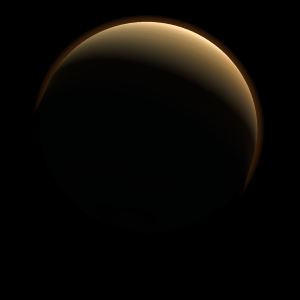|
|
Space Astro
|
Info for exoplanet "Likalan Tur"
| Scientific (actual) data |
|---|
| Name | HD 190228 b |
| Planet status | Confirmed |
| Planet mass | 6 |
| Mass sini | 5 |
| Orbital period | 1145.77 |
| Semi major axis | 2.293 |
| Orbit eccentricity | 0.547 |
| Inclination | 48 |
| Angular distance | 0.030253 |
| Discovered | 2002 |
| Updated | 2024-10-28 |
| Omega | 107 |
| Tperi | 1236 |
| Publication | Published in a refereed paper |
| Detection type | Radial Velocity, Astrometry |
| Mass measurement type | Astrometry |
| Star name | HD 190228 |
| Right ascension | 300.75° |
| Declination | 28.31° |
| Mag v | 7.3 |
| Star distance | 66.11 |
| Star metallicity | -0.24 |
| Star mass | 1.3 |
| Star radius | 3.02 |
| Star sp type | G5IV |
| Star age | 10.16 |
| Star temperature | 5176 |
| Wikipedia article | HD 190228 b |
Back
| |
| Fictional info (?) |
|---|
| Suggested name | Likalan Tur |
| Planet type | Large cold gas giant |
|
| Atmosphere | Ozone | 52% |
| Argon | 35% |
| Hydrogen | 6.4% |
| Hydrogen peroxide | 3% |
| Formaldehyde | 1.6% |
| Carbonyl sulfide | 1.4% |
| Methane | 1.1E-5% |
| Sulfur dioxide | 7.0E-6% |
| Atmospheric pressure | 32 bar |
 |
| Moon | Nypehe-me | Large slightly egg-shaped rocky comet |
| Google search for Likalan tur |
|
Website by Joachim Michaelis
|
|
|
|